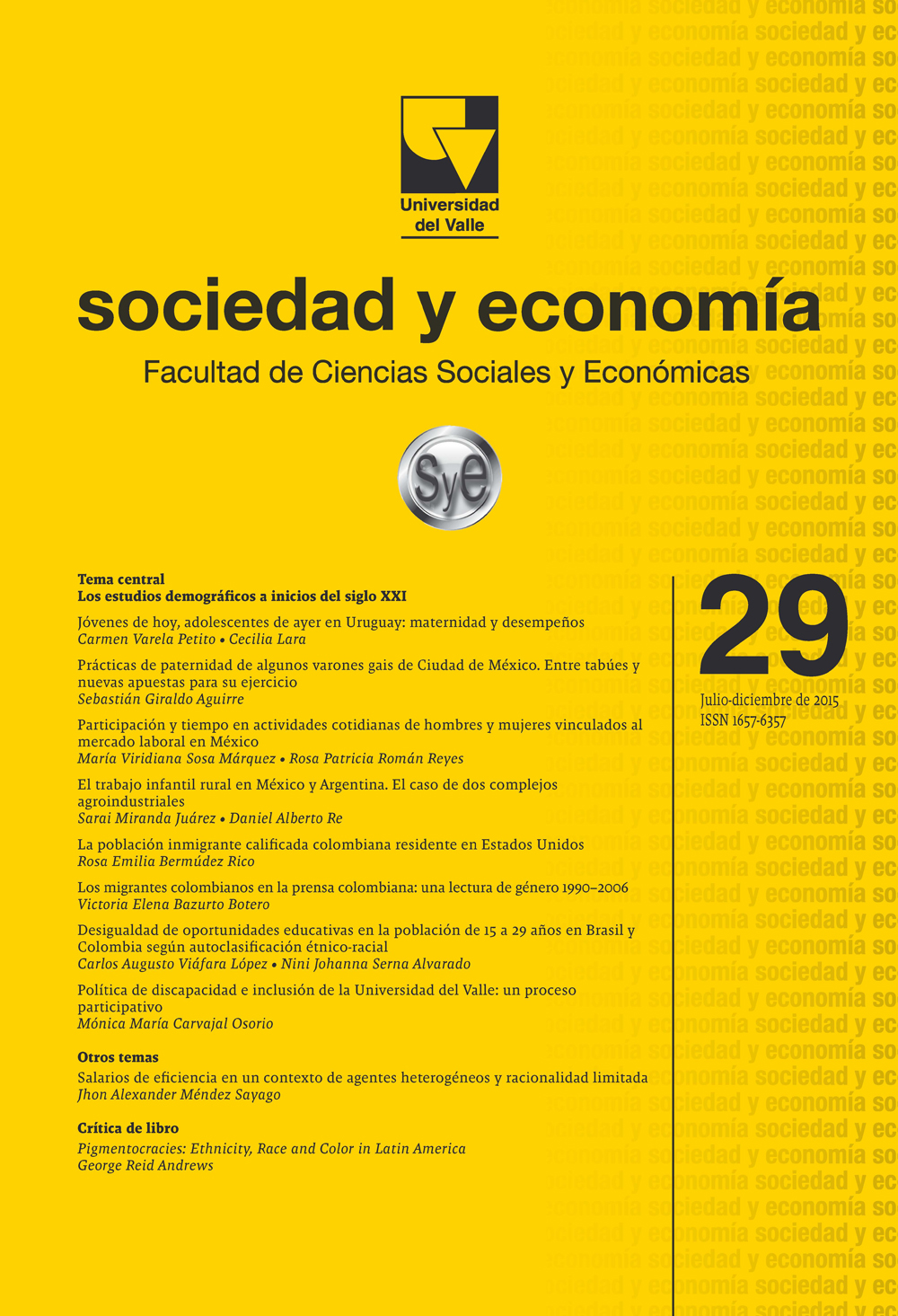The Rural Child Labor in México and Argentina. Two Agro-industrial Scenarios
Main Article Content
This article describes the characteristics and type of work done by children in activities such as floriculture and tobacco industry. It aims to give an account of two socioeconomic realities that are traversed by the same global process: the “new” model of production imposed by the agro-industrial complexes. In Latin American agriculture, there are seasonal activities that depend on wage labor and temporary workers in which women and children presence plays a main role. In many cases, children help their parents and contribute to the family labor; but in other cases, both boys and girls are workers themselves attempting to increase the household incomes. The methodology used is qualitative.
agro-industrial complex; child labor; Argentina; Mexico.

This work is licensed under a Creative Commons Attribution-NonCommercial 4.0 International License.
Revista sociedad y economía editada por la Facultad de Ciencias Sociales y Económicas de la Universidad del Valle se encuentra bajo una Licencia Internacional Creative Commons Atribución - No comercial 4.0
Basada en una obra en http://sociedadyeconomia.univalle.edu.co





